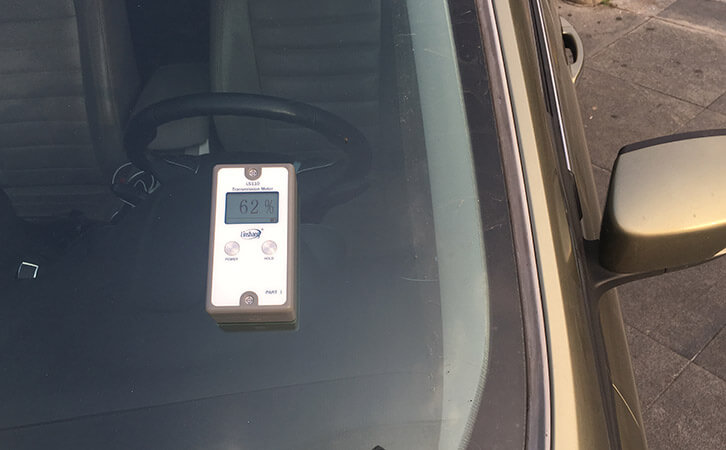Window Tint Meter For Testing Automotive windshield
In order to reduce the sun's infrared and ultraviolet radiation in the car, many car owners have attached a very good solar film with thermal insulation effect, but many friends have torn off when facing the annual automotive windshield light transmittance inspection. Although this requirement seems to be awkward for the owner, in fact, there is a safety knowledge that is worthy of our understanding behind such a light transmittance regulation.
With the improvement of the living standards of the people, the quality of life of most families is also increasing with the increase of income. The purchase of private cars is no longer as remote as it was in the early days of reform and opening up. The number of cars that have grown dramatically in recent years is also reminding people to raise their awareness of safety. The state is constantly improving the standards for the safety of motor vehicles. According to the provisions of GB 7258-2017 motor safety technical requirements, the annual light transmittance of the vehicle requires that the light transmittance of the front windshield film is not less than 70%. In fact, this regulation is based on the safe visual distance when driving.
Studies have shown that the visible distance of the human eye will decrease with the decrease of visible light. 70% of the annual light transmittance requirement of the vehicle is a key turning point of the human eye's visible distance. When the visible light incident on the eye is from 70%-100%, the visible distance is less affected by the light transmittance. As the light transmittance decreases, the visible distance decreases relatively slowly; But, when the transmittance is lower than 70%, along with the decline of the light transmittance, the visible distance will drop rapidly. In the normal weather and environment, when the visibility is 10 meters, if the front windshield light transmittance is 50%, the visual distance is less than one third for the people inside the car. The probability of a car accident due to a reduced visual distance will increase greatly.

With the above knowledge, do you have a deeper understanding of light transmittance and the visible distance of driving? The annual light transmittance requirements of vehicles are not arbitrarily designated. On the one hand, compliance with laws and regulations is fulfilling our obligations as citizens of the People's Republic of China and safeguarding our own rights and interests.
Through our extensive testing, we know that the light transmittance of the car when it is not filmed is about 80%. The light transmittance after attaching the solar film is equal to the transmittance of the glass multiplied by the light transmittance of the solar film, which means the light transmittance of the automobile film must be at least 80% to achieve the annual light transmittance requirement of the vehicle.
With the improvement of solar film technology, there are many solar films on the market that can meet high heat insulation and ultraviolet light while having high light transmittance. Now many auto 4S shops and solar film shops are equipped with special window tint meters that is used to detect the light transmittance after filming. In addition to testing the light transmittance. Some instruments can not only detect the infrared and ultraviolet rejection rate. In addition to polishing the eyes before purchasing the solar film, it is best to carry out testing through professional window tint meter to ensure that the annual light transmittance requirements of the vehicle are up to standard. Of course, this is also a guarantee for our own safety.
Window tint metertests the light transmittance of the front windshield
- Linshang Insulated Glass Unit Measuring Tools
- Spectacle lens anti-blue light detection---blue-violet light transmittance meter
- Measurement of Optical Density
- Difference of LS116 Transmission & LS117 OD Meter
- Difference between LS116 and LS117 Light Transmittance Meter
- What’s the Difference Between Point Light and Parallel Light Transmittance Meter
